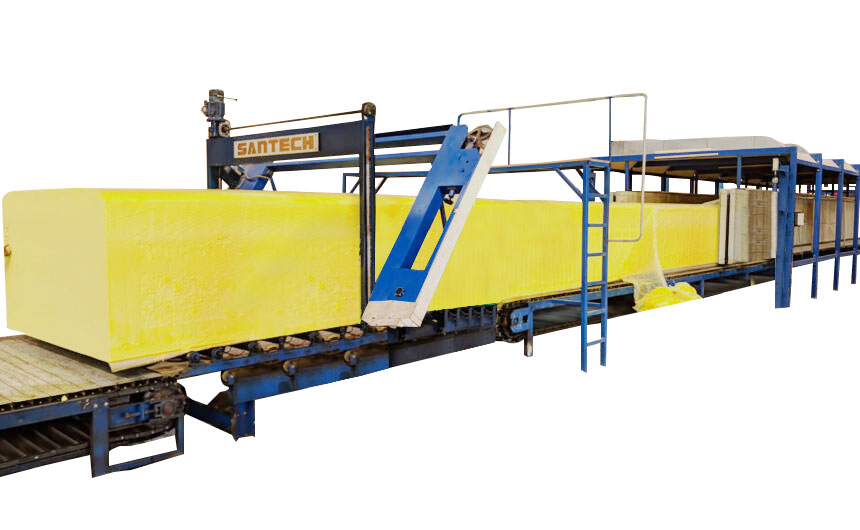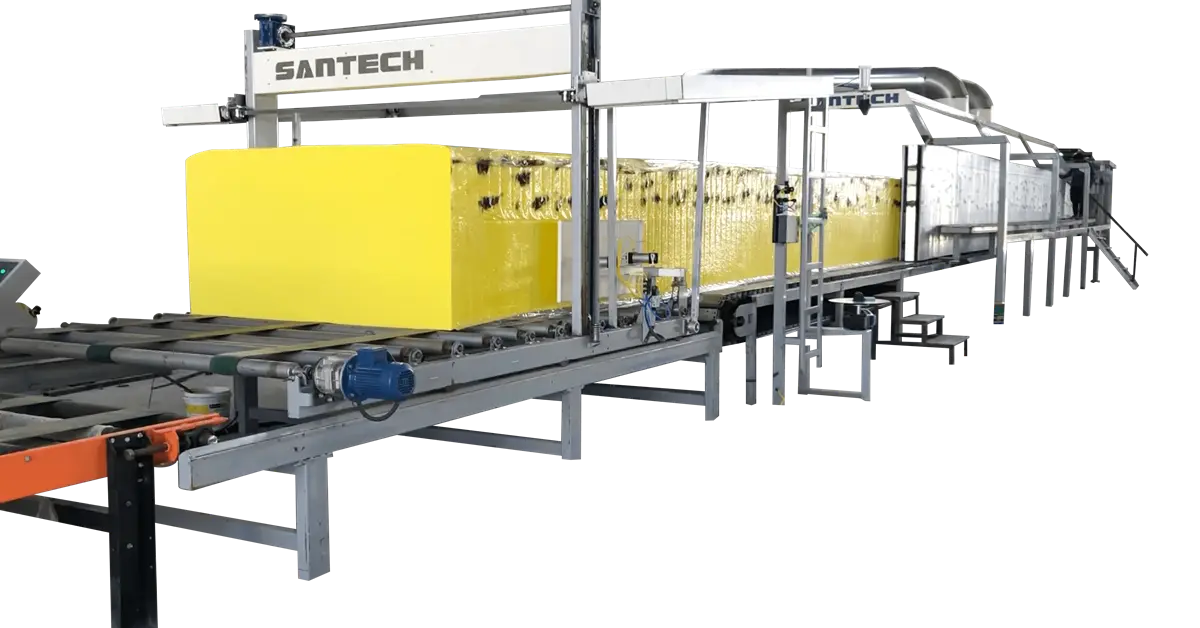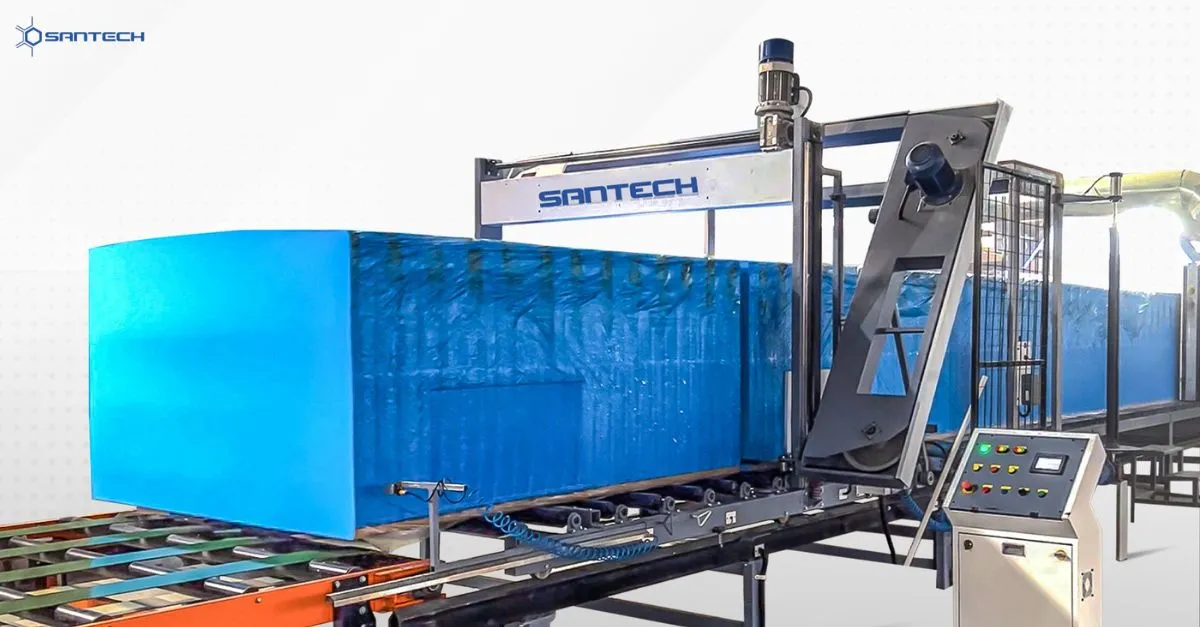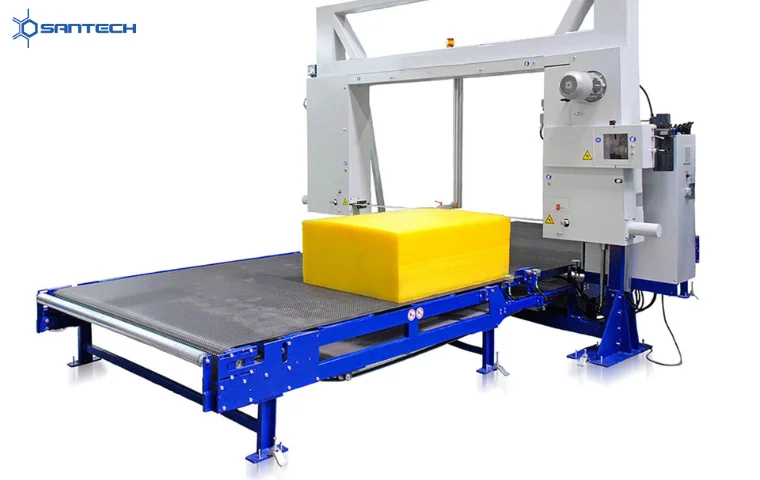Have you ever wondered how a wide range of foam products, from plush mattresses to essential automotive components, are crafted precisely and uniformly? The answer to this intriguing question lies within the realm of foaming machines, specifically the revolutionary continuous foaming machine. But what exactly is a continuous foaming machine, and how does it have the power to transform production efficiency? Let’s embark on a journey into the intriguing world of foam manufacturing, exploring the benefits of continuous foaming machines and uncovering the secrets behind their exceptional performance. But let us first understand what the term continuous foaming machine means.
Understanding Continuous Foaming Machine
Continuous foam-producing machines are the unsung heroes of the foam manufacturing industry. These remarkable machines are engineered to produce foam in a continuous, uninterrupted manner, ensuring exceptional quality and unmatched consistency in the final product. Unlike traditional batch processes, where foam is generated in limited quantities, these machines operate tirelessly, creating a seamless flow of foam that seems almost like an art form.
Now that you are aware of what these machines are, let us have a look at the benefits of having such machines in your industries.
Benefits Of Continuous Foaming Machine
Constant foam-producing machines offer a plethora of advantages that make them indispensable in modern foam manufacturing:
-
Consistency:
Foam machines that produce foams continuously are masters of uniformity, guaranteeing consistent foam density and quality, thus significantly reducing variations in the final product.
-
High Production Rates:
These machines are the workhorses of the industry, capable of operating around the clock, seven days a week. This capability translates into a remarkable increase in production capacity, allowing manufacturers to meet the soaring demand for foam products.
-
Cost-Efficiency:
By minimising material waste and optimising energy consumption, continuous foaming machines contribute substantially to cost savings, making them a wise investment for any foam manufacturer.
-
Customisation:
Flexibility is a hallmark of continuous foaming machines. Manufacturers can easily adjust various parameters to create foam with specific properties, catering to the diverse needs of different industries.
Until now, you are aware of this amazing machine’s advantages. Let us look at how you can enhance your machine’s efficiency and productivity.
How To Enhance Continuous Foaming Machine’s Efficiency And Productivity?
Having unveiled the numerous advantages of continuous foaming machines, let’s now dive deeper into the strategies and techniques that can be utilised to maximise their efficiency and productivity:
-
Regular Maintenance
Regular maintenance is the backbone of continuous foaming machine efficiency. It involves cleaning, lubrication, part replacement and a proactive approach to prevent issues. Conducting routine inspections and following a maintenance schedule can identify potential problems before they escalate into costly breakdowns.
-
Optimise Machine Parameters
Delving deeper into parameter optimisation, consider implementing automated control systems. These systems can precisely manage parameters in real-time, adjusting foam density, curing time, and temperature more accurately than manual adjustments. This level of control can result in consistently superior foam quality.
-
Invest In Training And Skill Development
Beyond basic training, offer ongoing education and skill development opportunities for machine operators. Encourage them to troubleshoot minor issues and fine-tune machine settings based on real-time data. Empowering operators to take ownership of machine performance can foster a culture of continuous improvement.
-
Energy Efficiency Measures
Investigate energy-efficient upgrades for your continuous foaming machine. Upgrading to energy-efficient motors, improving insulation, and optimising heating and cooling systems can result in substantial long-term cost savings and a reduced carbon footprint.
-
Data Monitoring And Analytics
Implement a data monitoring and analytics system that tracks real-time machine performance. This can provide valuable insights into machine efficiency and help predict maintenance needs. Machine learning algorithms can predict when components will likely fail, allowing for proactive maintenance.
-
Supply Chain Optimisation
Collaborate closely with suppliers to ensure a steady and high-quality supply of raw materials. Just-in-time inventory practices can minimise costs while ensuring that production is never delayed due to material shortages.
-
Implement Lean Manufacturing Principles
Lean principles can streamline operations and reduce waste. Organised workspaces, standardised procedures, and visual management techniques can improve overall efficiency and minimise downtime.
-
Constant Improvement
- Foster a culture of continuous improvement within your organisation.
- Encourage employees at all levels to suggest process enhancements and innovations.
- Regularly review and implement the best ideas to drive ongoing productivity gains.
-
Safety Protocols
Prioritise safety protocols and training to reduce accidents and injuries. A safe working environment protects employees and contributes to smoother operations and fewer disruptions.
-
Benchmarking And Industry Best Practices
Continuously benchmark your operations against industry best practices and competitors. Attend industry conferences and seek partnerships with organisations that can provide insights and guidance on improving machine efficiency.
Wrap Up
Continuous foaming machines stand as a testament to human ingenuity in manufacturing. They have revolutionised foam manufacturing by offering consistent, cost-effective, high-capacity production capabilities. By comprehending the inner workings of these machines and implementing strategies to enhance their efficiency, foam machine manufacturers can ascend to new heights, meeting the ever-expanding demand for foam-based products. Adopting these machines is not merely a step forward; it’s a quantum leap toward a more efficient and productive future in foam manufacturing.




